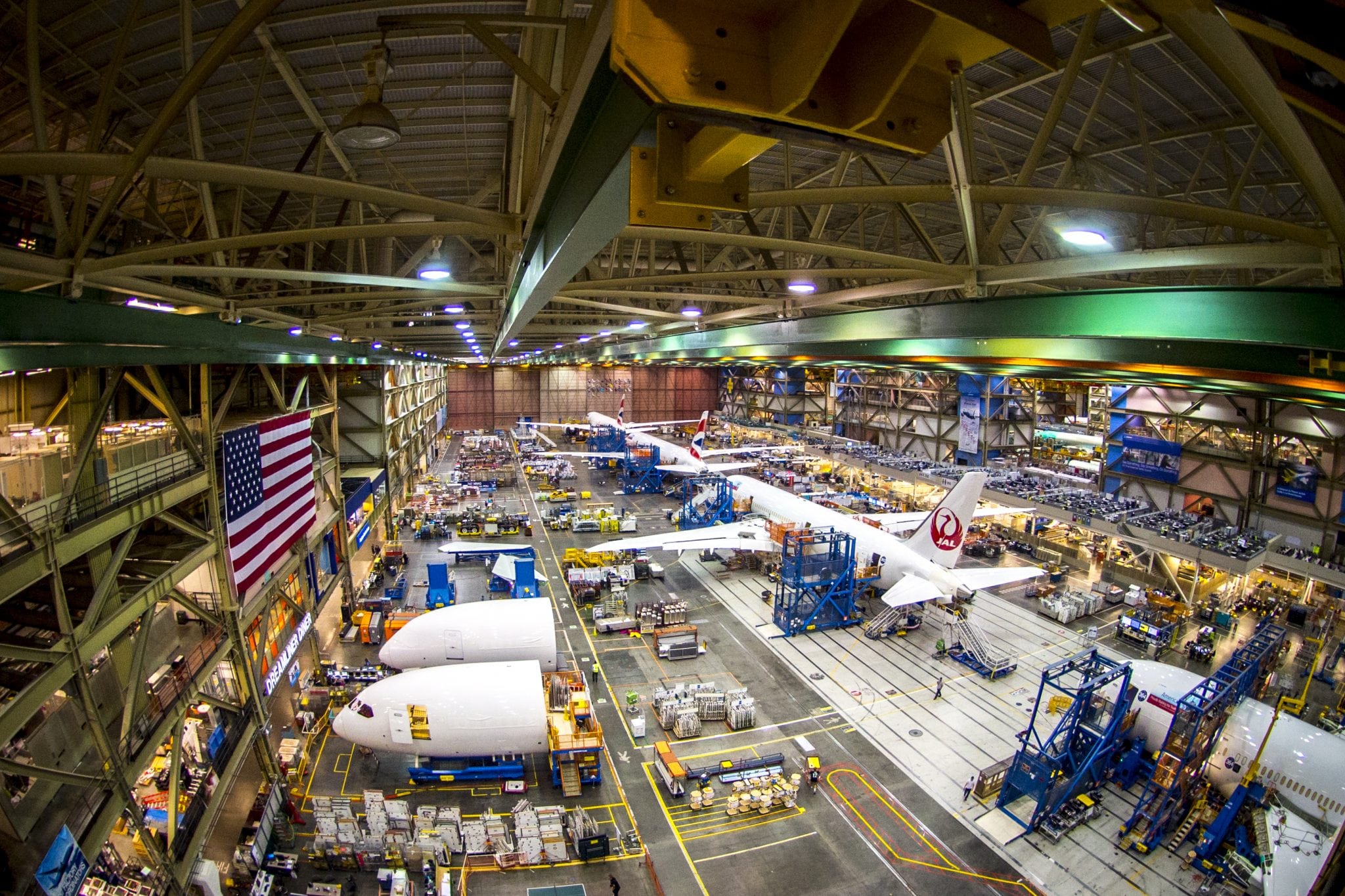[Avionics Today 03-28-2016] The FAA has upped its 20-year annual growth rate forecast for airline traffic in its recently released 2016 to 2036 Aerospace Forecast, reporting that demand for air travel last year grew at its fastest rate since 2007. The forecast calls for U.S. carrier passenger growth over the next 20 years to average 2.1 percent per year, slightly faster than last year’s forecast.
 |
| Photo: Boeing |
“Although the U.S. and global economy continued to sputter in 2015, stable demand and lower energy prices resulted in record profits for U.S. airlines,” the report, released March 24, states. Moreover, the agency anticipates that U.S. carrier profitability should remain steady or increase in the next two decades as a result of strengthening demand and increased revenues, while lower energy prices keep operating costs in check.
With the report covering all facets of the aerospace industry, including commercial airlines, air cargo, general aviation, and commercial fleet sizes, we’ve spoiled you here with the highlights.
It’s Raining UAS
“Unmanned Aircraft Systems (UAS) will be the most dynamic growth sector within aviation,” the FAA’s report claims. While the agency looks at other aviation segments in iterations of two decades, it confines its outlook for the UAS segment within the next five years, in which it expects to see rapid growth.
Buoyed by advancing technologies, such as sense-and-avoid, and emerging FAA regulations that will sanction and structure commercial operations, the FAA, in conjunction with analyst firm The Teal Group, have forecasted that the U.S. UAS fleet will rise from 32,800 aircraft in 2016 to an estimated 542,500 in 2020.
Small, hobbyist UAS purchases will generate 90 percent of this demand, as the report estimates sales may grow from 1.9 million in 2016 to as many as 4.3 million by 2020. Meanwhile, the FAA expects sales of UAS for commercial purposes to grow from 600,000 to 2.7 million during the same period. The report notes that UAS forecasts are “highly uncertain,” however, with the size of the fleet ultimately dependent on the regulatory structure that emerges from the FAA’s Operation and Certification of Small UAS Notice of Proposed Rulemaking (NPRM), put forth by the organization on Feb. 23, 2015.
Once the FAA establishes UAS regulations across the NAS, the agency anticipates that UAS proliferation will take off across five main industries: industrial inspection, real estate/aerial photography, agriculture, insurance, and government. Furthermore, once technologies and regulations emerge that more easily enable safe Beyond Visual Line of Sight (BVLOS) operations and operations of multiple unmanned aircraft by a single pilot, the FAA anticipates UAS proliferation will soar.
“Once a framework is enabled for BVLOS operations, the projected market sizes could be higher than the forecast,” the report states. “Venture capitalists are already investing considerable amounts of money into this emerging industry with the intention to build early market share in this technology. Manufacturers’ efforts are focused on building systems optimized for particular segments of the market.”
Commercial
Between 2015 and 2036 the number of commercial aircraft in the U.S. mainline carrier fleet is forecast to grow from 3,946 to 5,339, an average of 66 aircraft per year as carriers continue to remove older, less fuel-efficient narrow-body aircraft, according to the report.
The FAA forecast projects that the narrow-body fleet, including E-series aircraft at American and JetBlue, will grow at a rate of 51 aircraft a year, as carriers replace legacy Boeing 757, 737 and Airbus A320 family aircraft with the next generation MAX and new engine option (neo) families.
Meanwhile, the wide-body fleet will grow by 60 percent in the next two decades. This boils down to an average of 15 aircraft per year as carriers add Boeing 777-8/9s, 787s and A350s while retiring aging 767-300s and 777-200s.
Slow but Steady GA Growth
According to the FAA, the long-term outlook for general aviation is favorable, led by gains in turbine aircraft activity. The forecast reports that the active general aviation fleet will increase 0.2 percent a year between 2015 and 2036, a total to an increase in the fleet of about 7,000 aircraft.
“While steady growth in both GDP and corporate profits results in continued growth of the turbine and rotorcraft fleets, the largest segment of the fleet — fixed wing piston aircraft — continues to shrink over the forecast,” the report explained.
While the forecast projects minimal fleet growth, the number of general aviation flight hours will increase at a slightly faster pace, an average of 1.2 percent per year through 2036, as growth in turbine, rotorcraft, and experimental hours “more than offset” a decline in fixed wing piston hours.
More Planes, More Work for ATC
As the numbers of regional and business jets in the nation’s skies increases dramatically, fleet mixes change, and carriers consolidate operations in their large hubs, the report expects increased activity growth, which, in turn has the potential to increase controller workload.
“Operations at FAA and contract towers are forecast to increase 0.9 percent per year in the next two decades, with commercial activity growing at five times the rate of non-commercial activity,” the report explains.
The main driver for the increase in workload is the projected growth in airline and business aviation, with large and medium hubs seeing much faster increases than small and non-hub airports.